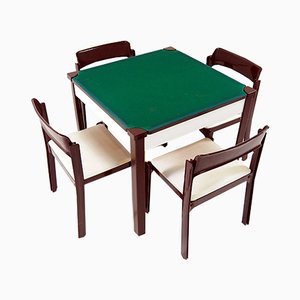
Born in Milan in 1891, Giovanni (Gio) Ponti studied architecture at Politecnico. After serving in World War I, he worked as Art Director for respected ceramics company Richard-Ginori. Between 1923 and 1927, he partnered with architects Mino Fiocchi and Emilio Lancia. In 1928, Ponti launched both his own architectural studio and the famed magazine Domus. Through the pages of Domus—and, later, those of Lo Stile, which he founded and edited between 1941 and 1947—Ponti influenced international design taste for over 50 years.
Around 1933, he teamed up with engineers Antonio Fornaroli and Eugenio Soncini to form Studio Ponti-Fornaroli-Soncini, which embraced a decidedly Modernist idiom and lasted until 1945. In 1950, he won the design commission for what became one of the 20th century’s most iconic buildings: Milan’s 32-storey Pirelli Tower (built 1956). In 1952, he partnered with architect Alberto Rosselli (Studio Ponti-Fornaroli-Rosselli); after Rosselli’s death in 1976, Ponti continued to collaborate with longtime partner Fornaroli.
Throughout his career, Ponti juggled numerous roles, including architect, industrial designer, craftsman, professor, painter, editor, and journalist. In addition to his prolific architectural work, Ponti’s design credits are also extensive, ranging from coffee machines (the world’s first, the Pavoni, in 1949) to lighting and furniture for the likes of Cassina, Artemide, and Venini.

